For the United Nations (UN), the year 2020 marked the beginning of a new era of conflict and violence, characterized by a proliferation of entrenched conflicts among non-state actors, an ever-present threat of terrorism, and soaring rates of urban, domestic, and gender-based violence. Since the release of the 2020 report, the gravity of these trends has been compounded by Russia’s invasion of Ukraine, and by growing geo-economic competition globally between democratic and autocratic states. More than ever, the time is right to invest in peace. And yet, peacebuilding and peace mediation budgets remain chronically underfunded, fragmented, and heavily reliant on scarce public funds. In response to these troubling features of the international landscape, UN Secretary-General Antonio Guterres urgently called for a deeper investment into peace and peacebuilding in his March 2022 report to the UN Peacebuilding Commission.
The emergent field of peace finance is a response to this imperative. The early proponents of peace finance have focused mostly on new financing mechanisms to catalyse additional private funding towards peacebuilding, tying the success of peace-building efforts to the improved risk-profile of proposed investments. Advocates of peace finance point out that the risk of investment decreases as the level of conflict decreases, and that investing in peace mediation or peacebuilding offers an effective way of de-risking project finance, ultimately increasing the return on investment.
However, there are significant hazards hidden in these ‘peace finance’ or ‘private sector development’ waters. Simply increasing funding for peacemaking while increasing the flow of private capital into conflict-affected areas will not be sufficient. Analysis across multiple sectors has shown that large-scale investments sometimes have a tendency to exacerbate conflict, and even well-intentioned and carefully targeted investments can produce unwanted effects if delivered in a ‘set-and-forget’ manner following the initial due-diligence phase. The reputational risk of merely token efforts towards peace-impact investing will be evident to readers familiar with the ‘green-washing’ of supposedly sustainable investments, and the resulting challenges confronting the ESG impact investment agenda.
Rather than simply ‘throwing money at the problem of conflict’, investors and financiers seeking to create an impact for peace must consider how to understand and address the systemic roots of conflict, and how to remain adaptive over an entire investment life-cycle, in response to highly dynamic and complex conflict settings.
Organisations such as the Peace Dividend Initiative (PDI) have been leading the charge in creating innovative and field-tested ways to design and deliver peace-supporting investment, ultimately seeking to harness market forces for peace. PDI pursues this aim by addressing three strategic questions when designing and delivering peace-supporting investments in conflict-affected areas:
- Can the prospect of private investment create fresh opportunities for peace dialogues at the local or state level?
- Can innovative approaches to SME business incubation help promote peace-supporting livelihoods and networks?
- Can private investment help accelerate and establish sustainable economic incentives in favor of peace for private, public and community actors?
PDI works by aligning key public and private sector actors on cutting-edge peace-supporting investment innovations and approaches. The Peace Venture Fund (PVF), a dedicated investment fund currently incubated within PDI whose work spans a wide range of fragile and at-risk (FAR) countries, exemplifies this groundbreaking cross-sectoral approach to investing in peace.
PDI’s groundbreaking work in promoting peace-supporting investment is sorely needed: SDG 16 (Peace, Justice, and Strong Institutions) remains one of the most underfunded Sustainable Development Goals. One key reason for this is likely the lack of understanding to date around what constitutes ‘peace impact’. What does it mean to invest in peace? How do we integrate a peace lens into the investment lifecycle? In many ways, the current state of the peace finance landscape is not dissimilar to the situation when Environmental, Social, and Governance (ESG) was first coined as a concept in 2005. Indeed, there was little understanding and limited adoption of ESG as a concept till the release of the UN Principles for Responsible Investment (PRI) report in 2006 which explicitly discussed the incorporation of ESG criteria into investment analyses and decision-making processes. In 2006, about USD 6.5 trillion in assets under management were associated with formal ESG commitments made by signatories to the PRI. By 2019, this figure had exploded to over USD 80 trillion.
Here, we present an important first step towards a more concrete understanding of what it means to design and deliver peace-supporting investment or ‘peace-impact’. Work on the +P framework, initiated by PDI since 2018, has generated a set of guidelines and recommendations for integrating peace impact as a core consideration in each stage of the investment lifecycle, from due diligence to exit. Much like the initial groundwork that was laid by the UN Global Compact Report and the Freshfield Report, the ambition of the +P framework is to act as a springboard for further and more in-depth discussion on peace-impact, or +P investing.
The +P framework has its roots in best practice learnings from leading peace mediation and peacebuilding organisations, and can be applied to a range of macro (conflict-level) and micro (firm-level) contexts. Its name, the +P, indicates its intended coherence and usability alongside other existing ESG and impact-measurement approaches.
The +P framework is intended to mobilise investment in support of peace by addressing the social, economic, and political drivers of violent conflict. This evidently requires a close knowledge of local conflict dynamics, and the +P criteria would allow investors to receive guidance from trusted peace-making partners, ensuring that the investment remains authentically peace-supporting. The +P framework also leaves room for the development of specific key performance indicators (KPIs) and more detailed and context-specific criteria, metrics and sub-metrics to track and measure peace impact at a firm- and portfolio-level. They are highly adaptable, based on the needs of the investor seeking to adopt a +P lens in their investment approach, and the availability of data fit for quantitative analysis and machine learning.
Charting the arc of the ESG’s phenomenal cross-industry adoption, the hope is for these guidelines to jumpstart the discussion around +P investing, and to guide the efforts of first-movers and innovators committed to a sustainable future for peace.
In 2023-24, PDI will be working iteratively with leading peacemakers, investors, researchers, and grassroots entrepreneurs in fragile and at-risk areas to pilot and adapt this initial framework, and to develop peace-positive investment guidelines, criteria and indicators. We welcome new partnerships in deepening and broadening this work.
by Dr. Ian Wadley, Founding team member and Executive Advisor and Rosalind Tan, Advisor, Venture Investment, PDI, with thanks to Dr. Achim Wennmann, Executive Advisor for Research and Insights, PDI, for his feedback.
Photo by Nataliya Vaitkevich on Pexels.


